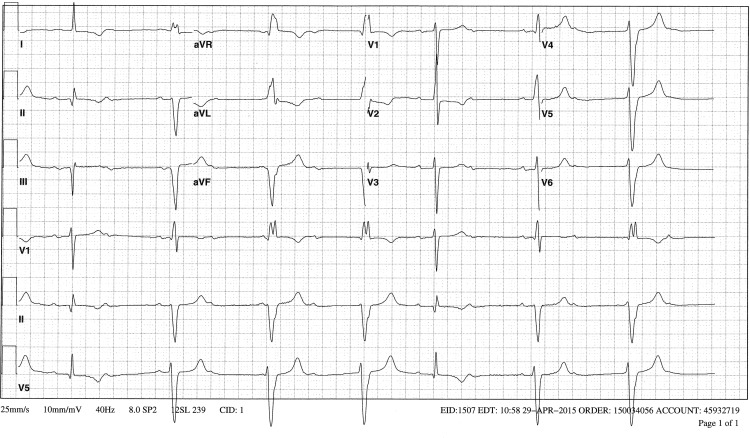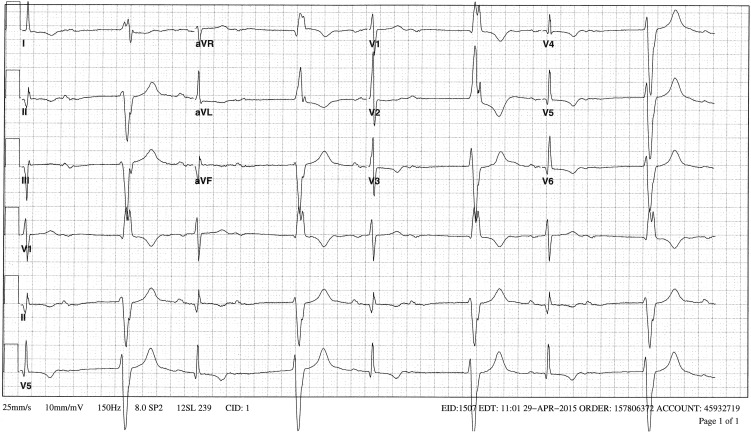On 2 consecutive nights, a 77-year-old man awakened from sleep and noted that he had a low heart rate. He had no other symptoms at the time. He came to the hospital the morning after the second episode, and his electrocardiogram showed sinus arrhythmia at a rate of 81 beats/min, high-grade second-degree atrioventricular block, an idioventricular escape rhythm at a rate of 43 beats/min, and atrioventricular dissociation except for 2 capture beats (QRS complexes 1 and 5) and 2 fusion beats (QRS complexes 2 and 6). The capture beats showed QRS and T-wave changes of inferoposterolateral myocardial infarction of indeterminate age ( Figure 1 ).

Six hours later, the high-grade second-degree atrioventricular block persisted, now in a pattern of escape-capture bigeminy ( Figure 2 ). Although escape-capture bigeminy has most often been described with marked sinus bradycardia or sinoatrial block and a junctional escape rhythm, this interesting arrhythmia, called reversed bigeminy by Pick and Langendorf, also can occur with atrioventricular block and an idioventricular or pacemaker-induced ventricular escape rhythm. For escape-capture bigeminy to emerge, the block must be above the escape pacemaker, and the effective cycle length of the primary pacemaker must be longer than the escape interval plus the refractory period following the escape complex.





